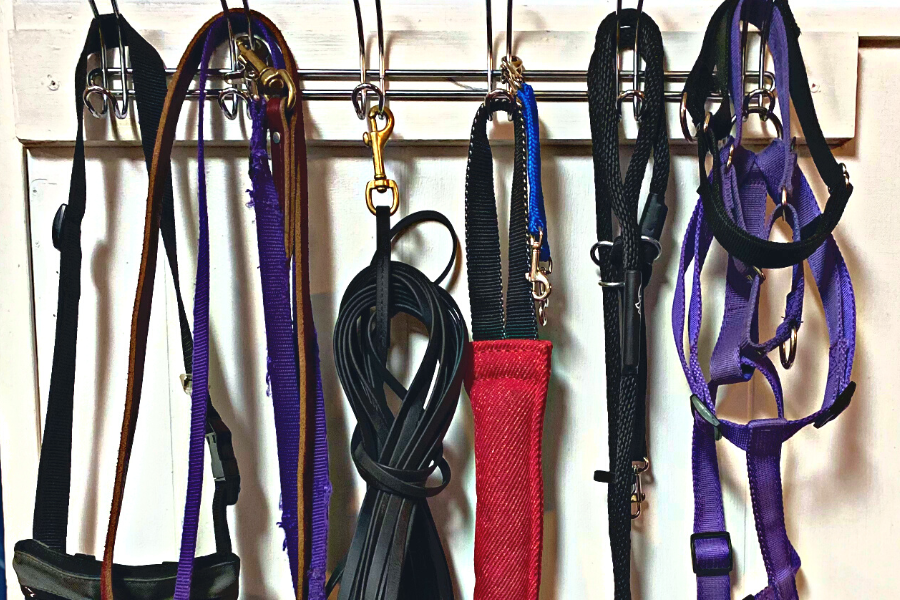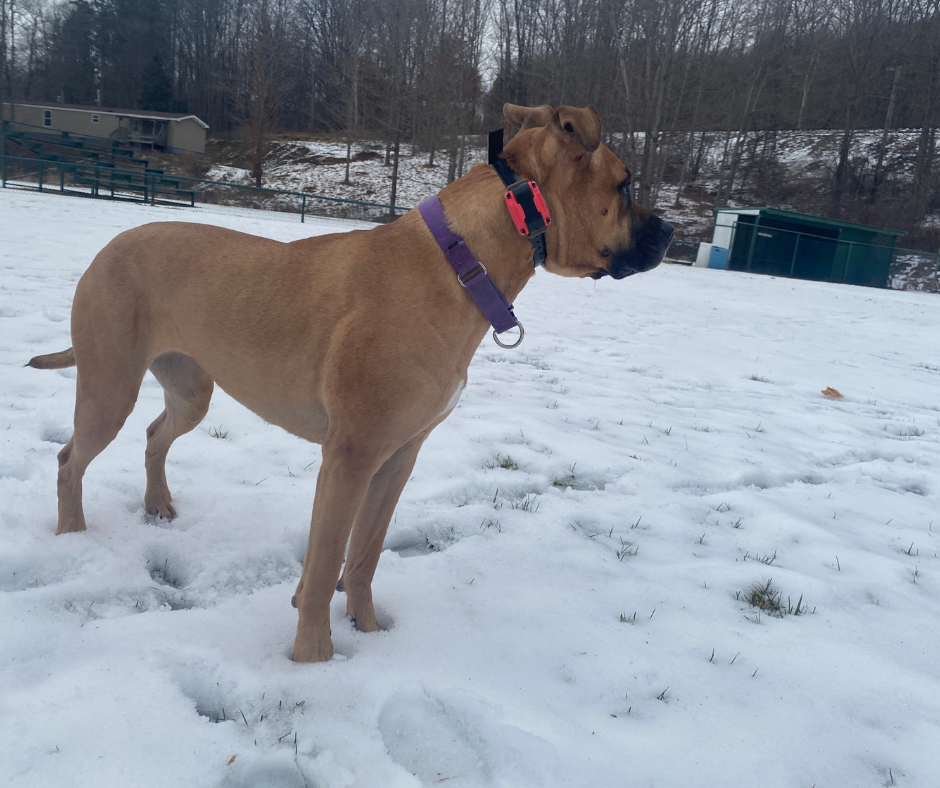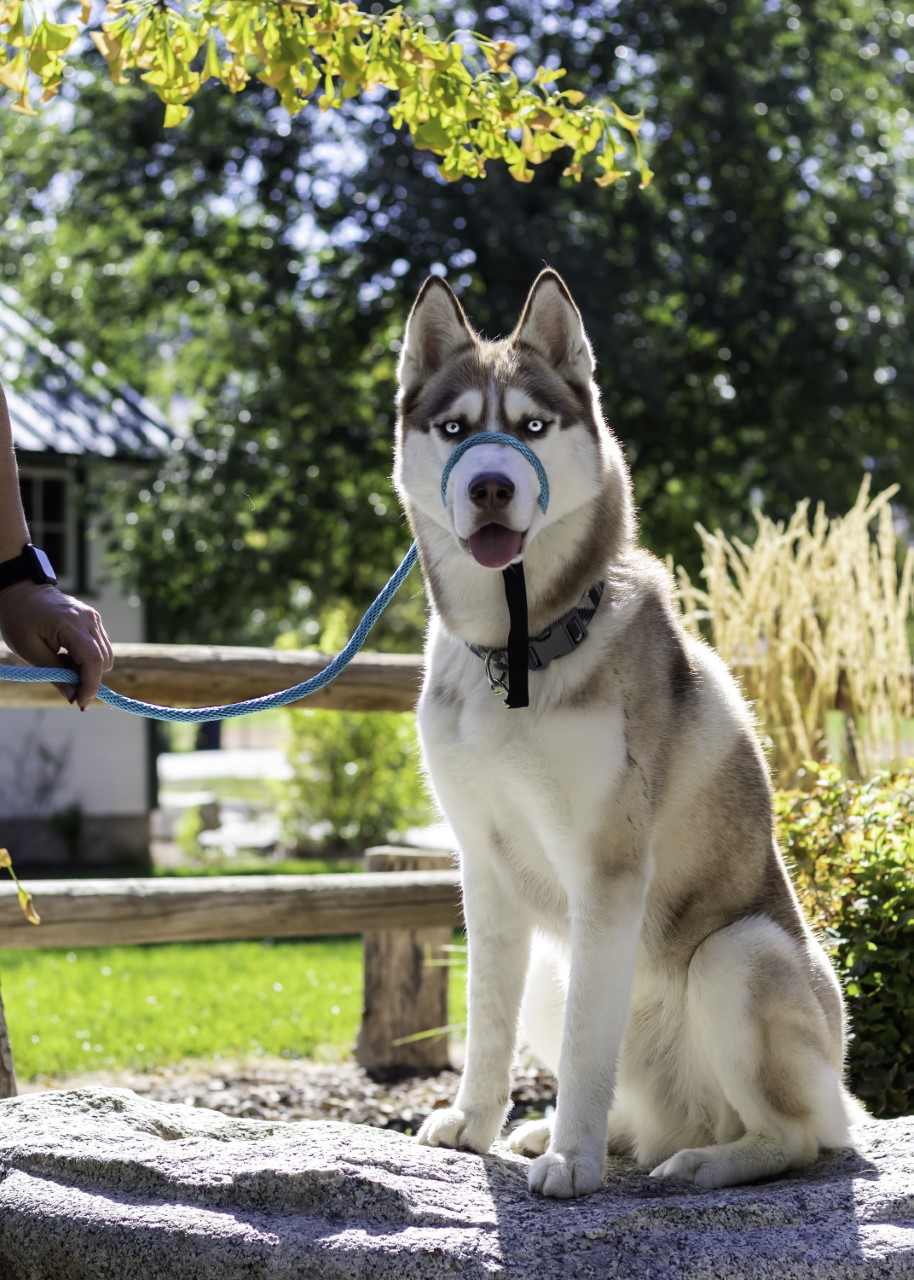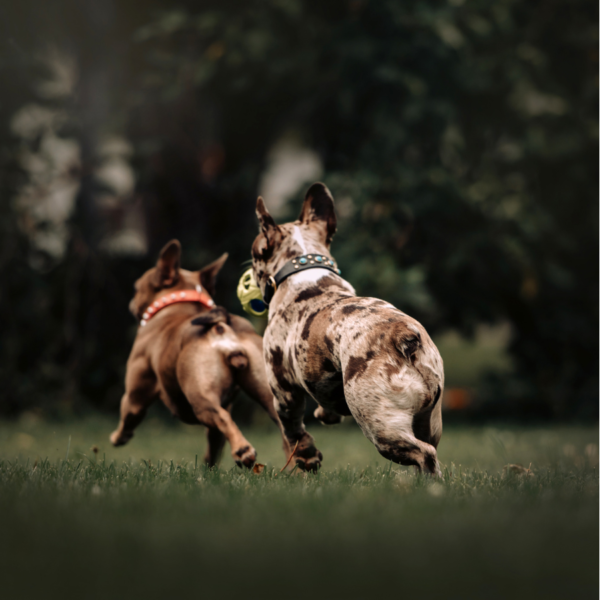
This post is all about dog training essentials.
Congratulations! I'm so excited for you to be reading this post because it means that you're ready to take the next step on your training journey!
Perhaps you've taught your dog to sit, or maybe you're working towards the perfect recall. Either way, if you're anything like me, you get to a point in training where you'd like to make things easier for yourself and upgrading the tools you're working with is a great way to up-level your training!
Dog Training Essentials
This list of tools and brief description of them is a general list of all of the tools available. Not all tools work for every dog and every behavior or command. Plus, introducing a new tool to your dog could make or break the relationship your dog has with the tool and propel you forward in training, or set you back many, many steps.
Please consult with a professional dog trainer to discuss these tools before using them on your dog.
The tools you use are only as good as the brain at the other end of them. So if you have any questions about any of the tools or equipment in this list please ask before using.
Related: 11 Indoor Dog Activities Guaranteed to Tire Any Dog
Dog Training Equipment
The basics:
These are some of my favorite bare-bones essentials when it comes to training your dog.
1. Treats
Treats are an essential part of training. They help to increase the dogs motivation and encourage behaviors we want to see more of!
It's important to choose your treats correctly. There should be two different kinds of treats in your treat pouch. A low value treat (we like to use the dog's kibble!) and a high value treat (anything freeze dried from duck hearts to small freeze dried fish! Plus, this helps aid their diet in adding a healthy treat.
Important tip: If your dog will work for their regular kibble allow them to work for their kibble. Giving too many treats can cause a belly ache, and could ultimately discourage your dog from enjoying training sessions.
2. Treat Pouch
Right now, we're obsessed with the Wilder Dog Treat Pouch because of all the pockets! The big one for your phone, keys etc, the medium one for low value treats and the small pocket for high value treats and poop bags.
3. Small Bites Kibble
Re: treats- if your dog won't work for it's own kibble, buy a different kind of kibble for training! Whether you pick a different brand or a different protein, this will help your dog feel like they're working for something special.
This will also save a ton of money and belly aches! Just make sure it's small enough kibble that the dog won't choke.
4. Slip Leash
A slip leash is one of the best dog training tools. Nearly every dog that comes through Liggett Dog Training, LLC starts with a slip leash.
The slip leash helps you and your dog build connection and helps teach your dog how to give to leash pressure, rather than lean against pressure.
If your dog is 30 pounds or less a 3/8" width would suite best. A 30-70 pound dog usually does well with a 1/2" slip. If your dog weighs more than 70 pounds you may want to consider a transition leash though- we'll talk about this one later!
Related: How to Use a Slip Leash
Dog Training Tips for Beginners
5. Regular 4 or 6 foot leash
Do yourself and your dog a favor and ditch the retractable leash for training sessions. A light, easy to hold leash is so underrated.
6. Flat Collar
Most of the time, the flat collar like a martingale serves as your back up collar for when a training collar comes loose or breaks.
A martingale flat collar is a safe and effective choice for a regular collar. The flat collar with a martingale loop like this one allows the collar to tighten to a certain distance which prevents it from slipping off. Otherwise the collar sits loosely around the dog's neck.
7. Squeaker
Keeping a squeaker in your treat pouch is a life hack that is not talked about enough! A squeaker (used sparingly) can help get your dog's attention if they get distracted easily or fixate. The easiest way to get a squeaker is to wait until your dog pulls one out of a squeaky toy!

Dog Training Tools for Walking
Consult a dog trainer before choosing one of these to use with your dog. These are TOOLS. A hammer in a criminal's hand is far more dangerous than a hammer in a contractor's hand.
8. Prong collar
This collar not for every dog and should not be used outside of training sessions. The philosophy behind using a prong collar is to not have to use it. The prong collar is usually meant for correcting the wrong decision, rather than preventing the wrong decision.
Most people see a prong collar and assume that the prongs will stop a dog from pulling, which is a very passive way to use the collar.
In reality, this collar is meant to be used proactively. This collar does not work based on the collar getting tight, but rather the quick "pop" or correction the handler gives the dog when making the wrong decision.
Relying on the prongs to stop your dog from pulling can create negative associations and can undermine the trust between you and your dog. Seek consultation with a professional for more help on using the prong collar correctly.
9. Gentle Leader (or "Haltie")
Generally, this is a good option for dogs who pull, but don't respond well to a prong collar or for people who aren't as mobile and able to correct a dog. A gentle leader does NOT act as a muzzle, so your dog can still bite something or someone while wearing a gentle leader.
10. Transitional Leash
One step up from the gentle leader is the Transition Leash. It can act as a slip leash or as an over-the-nose leash.
Dog Training Obedience
This range of stimulation offers a humane way to hold a dog accountable without a leash and to customize levels to the individual dog. An ecollar has a million different uses depending on the environment, the dog and the handler from basic obedience to behavior modification. An ecollar is best used and most effective under the guidance of a professional dog trainer.
11. Ecollar
E-collars (not a shock collar- please don't put one of those on your dog) have been a game changing tool in the dog training world from implementing corrections, to conditioning and perfecting obedience.
E-collars can deliver a TENS unit muscle stimulation at levels ranging from 1-100 or 127 depending on the model. Most dogs respond on really low levels that humans can't even feel, so you know you're being humane.
This is a great tool to work with a professional dog trainer with to expedite you and your dog's learning curve and to avoid classic ecollar mistakes.

Dogtra Ecollar
The leash without the leash. An ecollar can help nearly any dog with accountability, obedience and offers more freedom to many dogs and dog owners!
12. Raised Bed
A raised bed or area that your dog can rely on to be a safe, quiet place with clear boundaries makes teaching "place" a much easier job.
The elevated bed as opposed to a blanket or towel helps make it very clear to your dog when they are correctly in place.
Be sure to measure before purchasing one of these and plan out where it will fit in your house!
Related: Veterinary Price List | How to Save Money at the Vet
13. Long Line
Arguably, the most underrated training tool you can get yourself involved with.
Long lines are so so useful. They are an essential if you're looking to train your dog's recall. Long lines come in different lengths, but 30 feet is a great distance to give an off-leash feel.
The nylon long lines are good starter long lines, but they do tend to get dirty and smell. If you can swing it, definitely go for the biothane long line!
Dog Training Accessories
14. A Motivational Toy
Pick a toy that your dog loves that is only used for training. This could be a tug, frisbee, ball or other toy. Personally, my dog will starve before she stops playing with a jolly ball.
Related: 21 Best Pitbull Toys Your Dog Can’t Destroy in 5 Minutes
15. Clicker
This one is totally optional.
Many people ask about using a clicker, and I just don't recommend it as your voice works just as well! Some people prefer to use a clicker and that's totally fine!
Keep in mind, if you're going to start working on recall training, holding the leash, clicker and an ecollar remote can be very cumbersome and is likely to impede your training.
My recommendation is to use the word "yes" instead of a clicker. It's all personal preference though.
16. Training Journal
Totally optional, but a great way to track your training sessions, identify patterns and become insightful about yourself and your dog.
17. Education
Best Dog Training Books
Do not underestimate what you can learn from dog training books written by some of the world's best dog trainers. Here are some of my favorite dog books. The Forever Dog is more so about holistic health, but a dog who feels good, behaves well!
The tools used to communicate your dog are meant to be tools. If you are using a tool too much or not getting the intended results, please seek the help of a professional dog trainer.


















